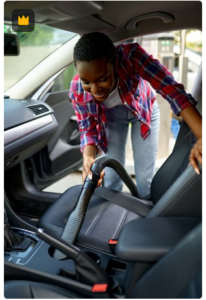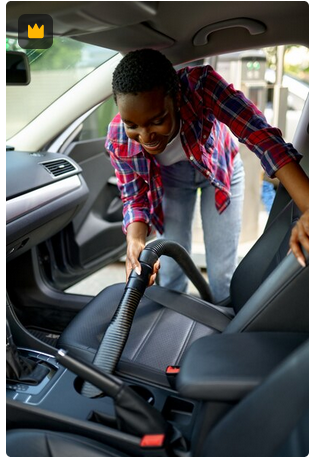Mastering the Snow: Essential Tips for Driving in Snowy Conditions
Driving in snowy conditions can be a daunting task for even the most experienced drivers. With the right preparation and knowledge, however, you can safely navigate your way through even the heaviest of snowfalls. Snow and ice can create hazardous driving conditions, and it’s important to be aware of how to adjust your driving techniques to stay safe on the road. In this post, we will discuss essential tips for mastering the snow and driving in snowy conditions. From preparing your vehicle for winter weather to adjusting your driving techniques, we’ve got you covered. Read on to learn how to stay safe and confident when driving in snowy conditions.
1. Understanding the Challenges of Driving in Snowy Conditions
Driving in snowy conditions can be a daunting task if you’re not prepared. The challenges that come with navigating through snow-covered roads are not to be taken lightly. The first and most obvious challenge is the lack of traction. Snow and ice on the road significantly reduce the grip between your tires and the pavement, making it difficult to accelerate, stop, and maneuver your vehicle.
Another challenge is the decreased visibility. Snowfall can create a whiteout effect, making it harder to see the road ahead, other vehicles, and even road signs. This reduced visibility can lead to accidents if you’re not cautious and attentive.
Additionally, snowy conditions often come with slippery surfaces. Even if you’re driving at a reasonable speed, sudden maneuvers or braking can cause your vehicle to skid or slide out of control. It’s crucial to maintain a steady and controlled driving style to minimize the risk of losing control of your vehicle.
Furthermore, snow-covered roads often hide hazardous obstacles such as potholes, debris, or even other vehicles that may have gotten stuck. These hidden hazards can catch you off guard and cause damage to your vehicle or pose a threat to your safety.
Understanding these challenges is the first step in mastering the art of driving in snowy conditions. By acknowledging the risks and preparing accordingly, you can ensure a safer and more confident driving experience when faced with snow-covered roads.
2. Preparing Your Vehicle for Winter Driving
When it comes to driving in snowy conditions, preparation is key. Before the winter season hits, it’s crucial to ensure that your vehicle is ready to handle the challenges that come with driving in icy and snowy conditions. Here are some essential tips to help you prepare your vehicle for winter driving:
1. Check your tires: Your tires are your first line of defense on snowy roads. Make sure they have sufficient tread depth and are properly inflated. Consider investing in snow tires for better traction and control on slippery surfaces.
2. Test your battery: Cold weather can be tough on your car’s battery. Have it tested to ensure it’s in good condition and can handle the extra demands of winter driving. Cold temperatures can reduce battery capacity, so having a backup plan, such as jumper cables or a portable battery pack, is also a smart move.
3. Check your wiper blades and fluids: Visibility is crucial in snowy conditions. Replace worn-out wiper blades and fill up your windshield washer fluid with a winter-specific formula that won’t freeze easily. It’s also a good idea to top up other essential fluids such as antifreeze and oil.
4. Inspect your brakes: Your brakes are essential for maintaining control on slippery roads. Have a professional inspect your brake pads, rotors, and brake fluid to ensure they are in good working condition. If necessary, have them replaced or serviced.
5. Prepare an emergency kit: It’s always better to be safe than sorry. Put together an emergency kit that includes items like a shovel, ice scraper, blankets, extra warm clothing, non-perishable food, water, a flashlight, and a portable phone charger. Having these essentials on hand can make a big difference in case you get stranded or encounter any unexpected situations.
By taking the time to prepare your vehicle for winter driving, you’re not only ensuring your safety but also the safety of others on the road. Don’t underestimate the importance of these simple yet essential steps – they can make all the difference when it comes to mastering the snow and navigating through challenging winter conditions.
3. Essential Safety Tips for Snowy Road Conditions
Driving in snowy road conditions can be challenging and potentially dangerous if not approached with caution. To ensure your safety and the safety of others on the road, here are some essential safety tips to keep in mind:
1. Slow down: Reduce your speed and drive at a slower pace than you would in normal weather conditions. This will give you more time to react and maneuver your vehicle safely.
2. Increase following distance: Maintain a greater distance between your vehicle and the one in front of you. This will allow for a longer stopping distance, as braking on icy or slippery surfaces takes longer than on dry roads.
3. Use gentle movements: Avoid sudden acceleration, braking, or steering maneuvers. Make smooth and gradual adjustments to minimize the risk of losing control of your vehicle.
4. Clear your windshield and windows: Before setting off, ensure that your windshield, windows, and mirrors are completely clear of snow and ice. Visibility is crucial for safe driving, so take the time to clear off any accumulated snow.
5. Use your headlights: Turn on your headlights, even during the daytime, to improve your visibility to other drivers. This will also help you see the road more clearly, especially during snowfall or reduced visibility.
6. Be cautious on hills: Approach hills with caution and maintain a steady speed. Avoid sudden acceleration or braking while climbing or descending hills, as this can cause your vehicle to lose traction.
7. Know your brakes: Understand the type of brakes your vehicle has (e.g., anti-lock brakes or standard brakes) and how to use them effectively in slippery conditions. Do not pump your brakes if you have anti-lock brakes; instead, apply steady pressure to activate the system.
8. Stay informed: Check weather and road condition reports before heading out. Stay updated on any advisories or warnings in your area. If conditions worsen, consider postponing your trip or finding an alternative route.
Remember, the key to driving in snowy conditions is patience and preparedness. By following these essential safety tips, you can master the snow and navigate the roads safely.
4. Adjusting Your Driving Technique for Snowy Conditions
Driving in snowy conditions can be challenging and requires a different approach compared to driving on clear roads. To ensure your safety and that of others on the road, it is crucial to adjust your driving technique accordingly.
One important aspect to consider when driving in the snow is to reduce your speed. Snowy roads can be slippery, reducing traction and making it harder to maneuver. By slowing down, you give yourself more time to react to any potential hazards and prevent skidding or sliding on the slippery surface.
Maintaining a safe distance from the vehicle in front of you is another vital adjustment to make. It takes longer to stop on snowy roads, so keeping a proper following distance allows for more reaction time and helps avoid rear-end collisions. Experts recommend doubling the usual following distance to ensure a safe buffer zone.
Smooth and gradual movements are key to driving in snowy conditions. Avoid sudden acceleration, braking, or steering maneuvers, as these actions can cause your vehicle to lose control on the slippery surface. Instead, gently apply the brakes, accelerate slowly, and make gradual steering adjustments to maintain control and stability.
Another essential technique to master is to anticipate and plan your actions in advance. Pay attention to the road ahead, including any upcoming turns, intersections, or obstacles. By planning your moves early, you can execute them smoothly and avoid sudden, jerky motions that could lead to loss of control.
Lastly, it’s important to be patient and stay calm while driving in snow. Allow extra time for your journey and be prepared for delays. Keeping a cool head and staying focused on the road will help you make better decisions and react appropriately to any unexpected situations.
By adjusting your driving technique for snowy conditions, you can navigate through winter weather more confidently and safely. Remember to slow down, maintain a safe distance, make smooth movements, plan ahead, and stay calm. These adjustments will help you master the snow and arrive at your destination securely.
5. How to Handle Skids and Slides on Snowy Roads
Driving in snowy conditions can be a daunting task, especially when skids and slides occur unexpectedly. However, with the right knowledge and techniques, you can confidently navigate through these challenging situations.
When you feel your vehicle starting to skid or slide on a snowy road, it’s crucial to remain calm and avoid panic. Remember that sudden movements can worsen the situation, so it’s important to react smoothly and purposefully.
Firstly, take your foot off the accelerator to reduce speed and regain control. Avoid slamming on the brakes, as this can cause the wheels to lock up and make it even more difficult to regain traction. Instead, gently apply steady pressure to the brakes, allowing the anti-lock braking system (ABS) to assist in maintaining control.
Next, steer into the skid. This means turning the steering wheel in the direction that the rear of your vehicle is sliding. This counterintuitive action helps to align your vehicle’s tires with the direction of the skid, allowing you to regain control. Keep your eyes focused on where you want to go and steer in that direction.
If your vehicle starts to fishtail, meaning the rear end swings from side to side, slowly ease off the gas pedal and try to straighten the wheels. Avoid overcompensating by abruptly turning the steering wheel, as this can result in a spinout. Gradually regain control by steering gently and maintaining a steady speed.
It’s important to note that certain vehicles are equipped with traction control systems or electronic stability control (ESC) which can assist in preventing skids and slides. Familiarize yourself with these features and understand how they operate to make the most of their capabilities.
Lastly, practicing defensive driving techniques and maintaining a safe distance from other vehicles is crucial in snowy conditions. By allowing extra space and time to react, you can minimize the risk of encountering skids and slides caused by sudden stops or changes in traffic flow.
Remember, mastering the art of handling skids and slides on snowy roads takes practice and experience. By staying calm, reacting purposefully, and using these techniques, you can confidently navigate through snowy conditions and ensure a safe journey for yourself and others on the road.
6. The Importance of Maintaining Proper Traction in Snow
When it comes to driving in snowy conditions, maintaining proper traction is absolutely crucial for your safety. Snow and ice create slippery road surfaces, making it more difficult for your vehicle to grip the road. This can result in loss of control, skidding, and even accidents.
To ensure proper traction, there are a few key things you need to consider. First and foremost, make sure your tires are suitable for snowy conditions. Winter tires are specifically designed with deeper treads and softer rubber compounds to provide better grip on slippery surfaces. Investing in a set of winter tires can greatly enhance your vehicle’s traction and handling in the snow.
In addition to having the right tires, it’s important to regularly check their tread depth and inflation. Adequate tread depth is essential for proper traction, as the grooves in the tire help to channel snow and slush away from the contact patch. If your tires are worn out, they won’t be able to provide the traction you need in snowy conditions. Similarly, maintaining the proper tire pressure is crucial, as underinflated tires can reduce traction and make it harder to control your vehicle.
Another important aspect of maintaining traction in the snow is adjusting your driving technique. Slow down and increase your following distance to allow for more time to stop and maneuver. Gentle and gradual inputs on the accelerator, brakes, and steering wheel can help prevent skidding or sliding on the slippery surface. Avoid sudden movements that can cause your tires to lose traction, such as harsh braking or accelerating.
Lastly, consider using additional traction aids, such as tire chains or snow socks, if you frequently encounter heavy snow or icy roads. These devices provide extra grip and can greatly improve your traction in extreme winter conditions.
By prioritizing proper traction and taking these precautions, you can significantly reduce the risk of accidents and ensure a safer driving experience in snowy conditions. Remember, it’s always better to be cautious and prepared than to take unnecessary risks when facing challenging weather conditions.
7. Winter Driving Etiquette and Considerations
When it comes to winter driving, it’s not just about your driving skills and vehicle preparation – it’s also important to consider winter driving etiquette and be mindful of other drivers on the road. Here are some essential tips to keep in mind for a smoother winter driving experience.
1. Maintain a safe following distance: Increase your following distance to at least three times the normal distance to allow for longer stopping distances on icy or snowy roads. This gives you more time to react to any sudden stops or obstacles ahead.
2. Use your signals and lights: Make sure your headlights, taillights, and turn signals are functioning properly, as visibility can be reduced in snowy conditions. Use your signals to indicate your intentions and give other drivers ample time to react.
3. Be patient and courteous: Winter driving conditions can be stressful for everyone on the road. Stay calm, be patient, and avoid aggressive maneuvers. Yield when necessary, and always be courteous to other drivers. Remember, we’re all trying to navigate the snowy conditions safely.
4. Give snowplows plenty of space: Snowplows play a crucial role in clearing the roads, so it’s important to give them plenty of space. Maintain a safe distance behind them, as their visibility may be limited, and never attempt to pass a snowplow unless it is safe to do so.
5. Watch out for pedestrians: Be extra vigilant for pedestrians during winter months, as sidewalks and crosswalks may be covered in snow or ice. Slow down when approaching intersections and be prepared to stop if someone is crossing the road.
6. Clear snow from your vehicle: Before hitting the road, ensure that all windows, mirrors, and lights are clear of snow and ice. This not only improves your visibility but also prevents snow from blowing off your vehicle and obstructing the vision of other drivers.
By following these winter driving etiquette and considerations, you can contribute to a safer and more enjoyable experience for yourself and others on the road. Remember, it’s better to arrive at your destination a little later than to risk compromising your safety in challenging winter conditions.
8. Essential Items to Keep in Your Car During Winter
When driving in snowy conditions, it is crucial to be prepared for any unforeseen circumstances. Keeping essential items in your car during winter can make all the difference in ensuring your safety and well-being. Here are a few items that should be on your winter driving checklist:
1. Ice scraper and snow brush: These tools are essential for clearing snow and ice from your windows, ensuring maximum visibility before you hit the road.
2. Snow shovel: A compact snow shovel can come in handy if you find yourself stuck in a snowbank or need to clear a path around your vehicle.
3. Blankets and extra warm clothing: In case of an emergency or if you are stranded for an extended period, having extra blankets and warm clothing can provide comfort and prevent hypothermia.
4. Non-perishable snacks and water: It’s always a good idea to have some non-perishable snacks and bottled water in your car, as you may need sustenance if you get stranded for an extended period.
5. First aid kit: Accidents can happen, and having a well-stocked first aid kit can help you tend to minor injuries until professional help arrives.
6. Jumper cables: Cold weather can be harsh on car batteries, and having jumper cables on hand can be a lifesaver if your battery dies.
7. Flashlight and extra batteries: A flashlight can be invaluable in the dark winter nights, especially if you need to inspect your car or signal for help.
8. Tire chains or snow socks: Depending on your location, you may encounter roads covered in thick snow or ice. Having tire chains or snow socks can provide extra traction and improve your vehicle’s grip on slippery surfaces.
9. Roadside emergency kit: A comprehensive roadside emergency kit should include items such as a reflective triangle, a reflective vest, a whistle, a fire extinguisher, and a portable phone charger.
Remember, it’s better to be over-prepared than caught off guard in treacherous winter conditions. By keeping these essential items in your car, you can navigate snowy roads with confidence and ensure your safety during the winter season.
9. What to Do in Case of an Emergency on Snowy Roads
Driving in snowy conditions can be challenging and hazardous, even for the most experienced drivers. While it’s important to take preventive measures and practice safe driving techniques, emergencies can still occur on snowy roads. Knowing how to handle these situations can mean the difference between a minor inconvenience and a major crisis.
In case of an emergency on snowy roads, it’s crucial to stay calm and think clearly. Your first priority should be to ensure the safety of yourself and your passengers. If possible, move your vehicle to a safe location away from traffic, such as the side of the road or a designated emergency stopping area.
If you find yourself stuck or unable to move, avoid spinning your wheels excessively, as this can dig your tires deeper into the snow. Instead, try gently rocking your vehicle back and forth by shifting from drive to reverse. You can also place sand, cat litter, or cardboard under your tires to improve traction.
In more severe emergencies, such as a collision or a vehicle breakdown in extreme weather conditions, it’s important to have an emergency kit readily available. This kit should include essentials such as a flashlight, extra warm clothing, blankets, a first aid kit, non-perishable food, water, and a fully charged mobile phone.
If you’re unable to resolve the emergency situation on your own or if it poses a significant risk to your safety, it’s crucial to call for professional help. Contact your local emergency services or roadside assistance provider for assistance. They are equipped with the necessary resources and expertise to handle emergencies in snowy conditions.
Remember, the key to handling emergencies on snowy roads is preparedness. By anticipating potential risks, equipping yourself with the right tools and knowledge, and staying calm under pressure, you can navigate through these challenging situations and ensure the safety of yourself and others on the road.
10. Conclusion: Becoming a Confident and Safe Winter Driver
Driving in snowy conditions can be a daunting task, but with the right knowledge and preparation, you can become a confident and safe winter driver. By following the essential tips mentioned throughout this blog post, you can navigate through snowy roads with ease.
First and foremost, always prioritize safety. Slow down and maintain a safe distance from other vehicles to allow for ample stopping time. Remember to accelerate and decelerate gradually to avoid skidding. Use your headlights to enhance visibility and be cautious of black ice, a hidden danger that can cause your vehicle to lose traction.
Equally important is ensuring your vehicle is winter-ready. Before hitting the road, check your tires and make sure they are properly inflated, and consider using snow tires or tire chains for added traction. Keep your windshield clear of snow and ice, and maintain a sufficient supply of windshield washer fluid. It is also advisable to have an emergency kit in your vehicle, including items such as a flashlight, ice scraper, blankets, and snacks.
Planning your route ahead of time is another vital aspect of winter driving. Stay informed about weather and road conditions and choose the safest route available. Allow extra time for your journey to account for potential delays caused by inclement weather.
Lastly, practice defensive driving techniques. Be aware of your surroundings and anticipate the actions of other drivers. Avoid sudden maneuvers and use your signals early to communicate your intentions. Stay calm and patient, as stressing in challenging conditions can lead to poor decision-making.
By incorporating these tips into your winter driving routine, you can master the snow and ensure a safe and confident journey. Remember, preparation and awareness are key to navigating snowy roads with ease. Stay safe and enjoy the beauty of winter while keeping your driving skills at their best.
As winter approaches, it’s important to be prepared for driving in snowy conditions. Our blog post provided essential tips that will help you master the snow and stay safe on the roads. From proper vehicle maintenance to adjusting your driving techniques, we covered everything you need to know to navigate snowy roads with confidence. Remember, safety should always be your top priority when driving in adverse weather conditions. With these tips in mind, you’ll be well-equipped to handle any snowy situation that comes your way. Stay safe and enjoy the winter wonderland!











+ There are no comments
Add yours